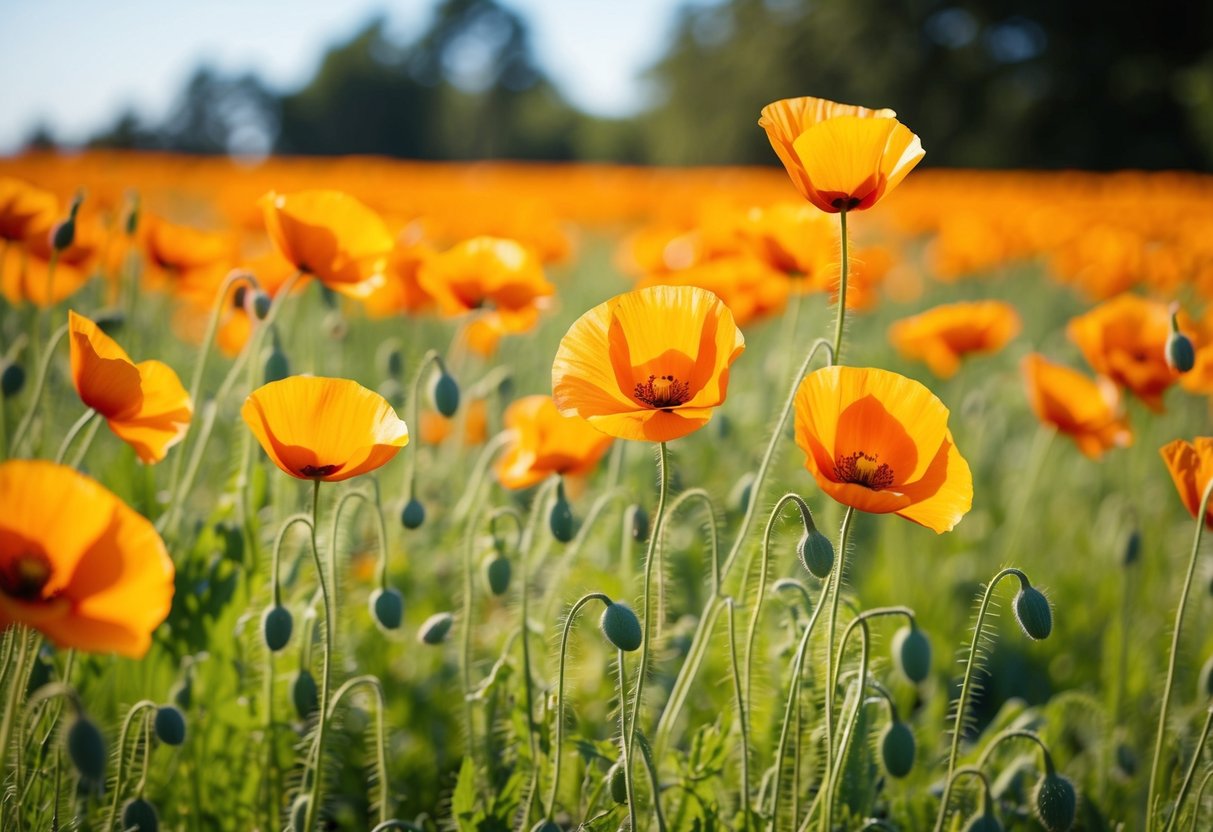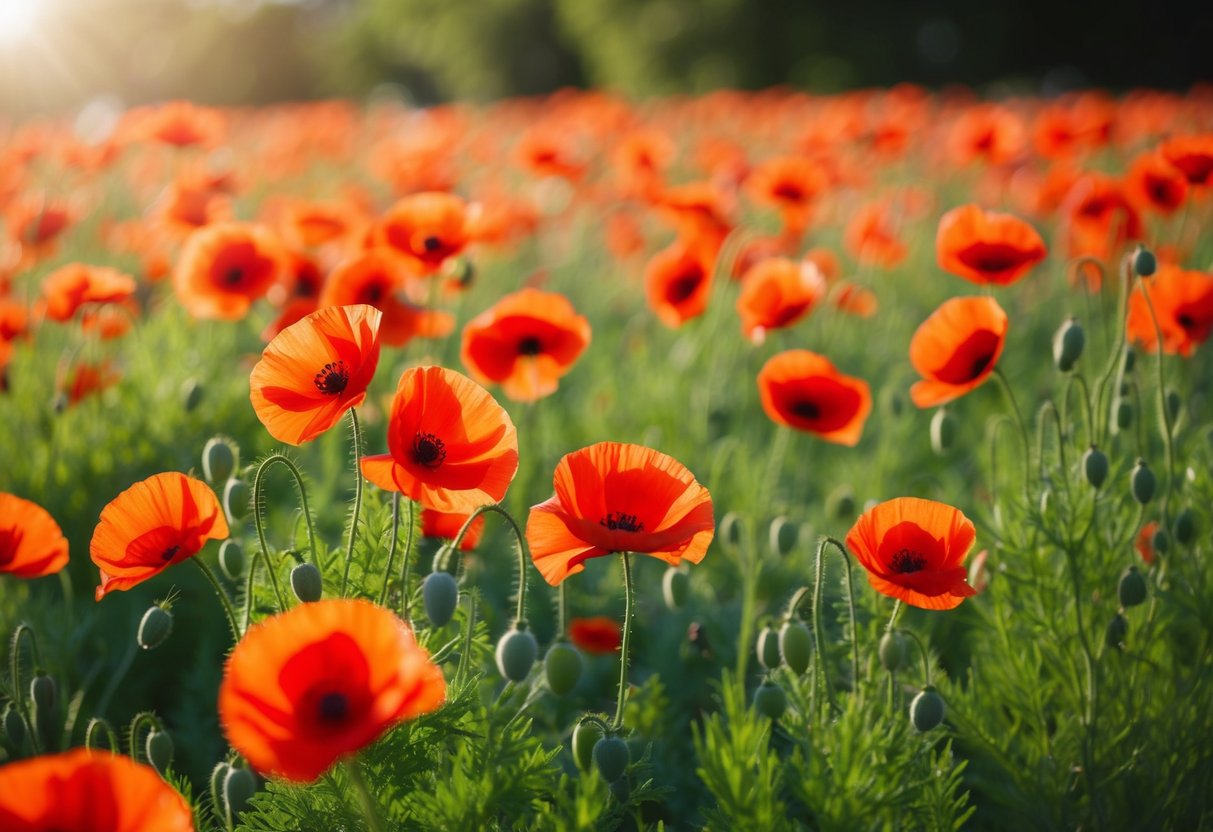Are Poppies Hardy Annuals? Discover Their Resilience
If you love vibrant and colorful gardens, you might be thinking about adding poppies to your planting list. Poppies are beautiful flowers that can brighten any garden space. Poppies can indeed be hardy annuals, meaning they complete their life cycle in one year but are resilient enough to survive cooler temperatures. They are loved by many gardeners for their ability to bring a splash of color in early spring.

When considering poppies for your garden, it’s helpful to know that they thrive in various climates. They are often planted alongside other spring-blooming flowers like larkspur and snapdragons for a classic look.
Poppies are also known to thrive in hardiness zones 2 through 9. If you’re in these zones, poppies are worth planting for a vivid display. You can sow the seeds in both autumn and spring to get blooms at different times.
Poppies are easy to care for and don’t require any complex gardening skills. For the best results, you’ll want to plant them where they can enjoy full sun and ensure the soil drains well. Once established, these hardy plants add charm and beauty, making them a perfect choice for anyone looking to enhance their garden’s appeal.
Understanding Poppies

Poppies are diverse and beautiful flowers with a variety of species. They can be found in many climates and parts of the world. With species ranging from annuals to perennials, these flowers offer a fascinating array of shapes and colors.
The Poppy Family and Its Members
The poppy family, known scientifically as Papaveraceae, includes many interesting members. Key species include the iconic Papaver somniferum, also known as the opium poppy. You might also be familiar with the cheerful California poppy or Eschscholzia californica. Then there’s the delicate Icelandic poppy, or Papaver nudicaule.
Oriental poppies and Himalayan poppies offer vibrant colors that gardeners love. Beyond these, the Papaver rhoeas, often called the Shirley poppy or field poppy, is known for its simple, bright red blooms. This species is also called the Flanders poppy or American Legion poppy, symbolizing remembrance.
Annual, Biennial, or Perennial?
Poppies can have different life cycles. Annual poppies like the opium poppy complete their life cycle in one growing season. They grow, bloom, produce seeds, and die within a year, providing bursts of color in gardens.
Meanwhile, perennial poppies are longer-lasting. For example, Oriental poppies can live for several years, giving repeated blooms. In between, biennial poppies take two years to grow from seed to bloom.
For many, choosing the right poppy depends on climate and growing conditions. Papaver nudicaule thrives in cooler climates, while the Eschscholzia californica is more suited to warmer environments. Knowing your options helps you pick the best poppy for your garden.
Planting and Growth Habits

When planting poppies, understanding the right conditions and their growth habits is key. They’ll thrive with ample sunlight, well-draining soil, and often reappear year after year due to their self-seeding nature.
Ideal Conditions for Poppies
Poppies love the sun and do best in full sun locations. Aim for at least six hours of direct sunlight daily. This will help them grow strong and full of blooms.
You should also ensure the soil is well-draining, as poppies dislike soggy conditions. If the soil doesn’t drain well, consider adding some sand to improve it.
For planting poppies, it’s important to consider the various hardiness zones. Many varieties of poppies are suited for USDA zones 2 through 9. These ranges ensure they survive cold winters and hot summers.
To plant poppies, sow the seeds either in fall or early spring. They prefer cool soil, especially when first planting. This can make a big difference in how well they germinate and eventually grow.
Self-Seeding Nature
Poppies are known for their ability to self-seed. After they bloom, they produce seed pods that will scatter seeds around your garden. This means you might find them popping up unexpectedly in areas where you didn’t specifically plant them.
To encourage this process, let the flowers dry on the plant. The pods will eventually split, and seeds will fall to the ground. This natural process allows poppies to return year after year without much effort on your part.
By allowing them to self-seed, you maintain a natural cycle that ensures blooms each season. This hands-off approach to gardening makes growing poppies appealing and relatively easy.
The Many Uses of Poppies

Poppies have played significant roles, from being a symbol of remembrance to their use in medicine and garden design. Their bright colors and various types make them a favorite for many purposes.
From Ceremonies to Medicine
Poppies have been symbols of remembrance since World War I, particularly the red poppy which is used to honor fallen soldiers. They hold a deep historical significance, especially in military ceremonies.
These flowers are not just about symbolism, though. Some types, like the opium poppy, have been used for medicinal purposes for centuries. Opium poppies contain compounds used to produce pain-relief medicines. It’s important to handle these with care and understand the regulations surrounding their growth and use.
Poppies in Garden Design
In garden design, poppies are beloved for their vibrant colors and adaptability. They thrive in sunny spots and well-drained soil, making them a staple in cottage gardens.
Their ability to self-seed helps them spread easily, creating beautiful wildflower displays. The common poppy, often seen in the Mediterranean, adds a splash of color and charm to any garden, making them a gardener’s delight with their easy maintenance and striking appearance.
Caring for Your Poppies

Poppies are relatively low-maintenance, but they do need care to thrive. You should focus on proper watering, the use of mulch, and keeping an eye out for pests and diseases to maintain healthy blooms.
Maintenance Tips
Regularly watering your poppies is essential for their growth. While they are drought-tolerant, consistent moisture, especially during dry spells, is key.
Applying a layer of mulch helps retain soil moisture and suppresses weeds, making your garden more manageable.
Deadheading, or removing spent flowers, encourages poppies to produce more blooms and prolongs the flowering period. This practice also prevents unwanted reseeding. You can feed your poppies with a phosphorus-rich fertilizer to enhance flower production and ensure robust growth.
Combating Pests and Diseases
Poppies are susceptible to pests like aphids and diseases such as powdery mildew. To keep these issues at bay, inspect your plants frequently for signs of trouble.
Using insecticidal soap can help manage aphid infestations. For diseases like powdery mildew, adequate air circulation and spacing between plants help prevent outbreaks. Avoid overhead watering to minimize the risk of diseases and ensure your poppies stay healthy and vibrant.
The Lifecycle of a Poppy

Poppies have a fascinating lifecycle that captivates gardeners and plant enthusiasts alike. You’ll find that poppies begin their journey from tiny seeds, through significant growth phases, until their vibrant blooms grace gardens and fields. Their seasonal flowering adds color and life, attracting pollinators and spreading seeds for new growth.
From Seed to Flower
The journey of a poppy starts with germination, where seeds transform into lively plants. For successful germination, plant poppy seeds in well-drained soil in a sunny spot. The seeds need light to germinate, so make sure to scatter them on the surface without covering them with soil.
As they grow, poppies develop from seedling stages into full-grown plants. You’ll notice small plants forming as root systems strengthen underground. These roots are essential for absorbing nutrients and water, allowing the plants to thrive.
Once established, poppies produce vibrant blooms. Some poppy varieties even create seed pods. When these pods dry out, they burst open to spread seeds, potentially reseeding themselves for future growth seasons.
Seasonal Changes and Flowering
Poppies exhibit a spectacular transformation throughout their flowering season. Spring is often the prolific bloom time for hardy annuals like poppies. During this season, the flowers open wide, showcasing colors like red, orange, and pink.
As summer advances, the blossoms may fade. But don’t worry! The dried seed pods serve as a reservoir for next year’s crop. Poppies thrive in cooler weather. Some varieties, like perennial poppies, endure colder temperatures to bloom again the following year.
Pollinators such as bees are attracted to poppies, aiding in their propagation. This interaction ensures that these striking flowers continue to flourish and spread. You might try propagating poppies through root cuttings as a method of introducing new plants into your garden.







